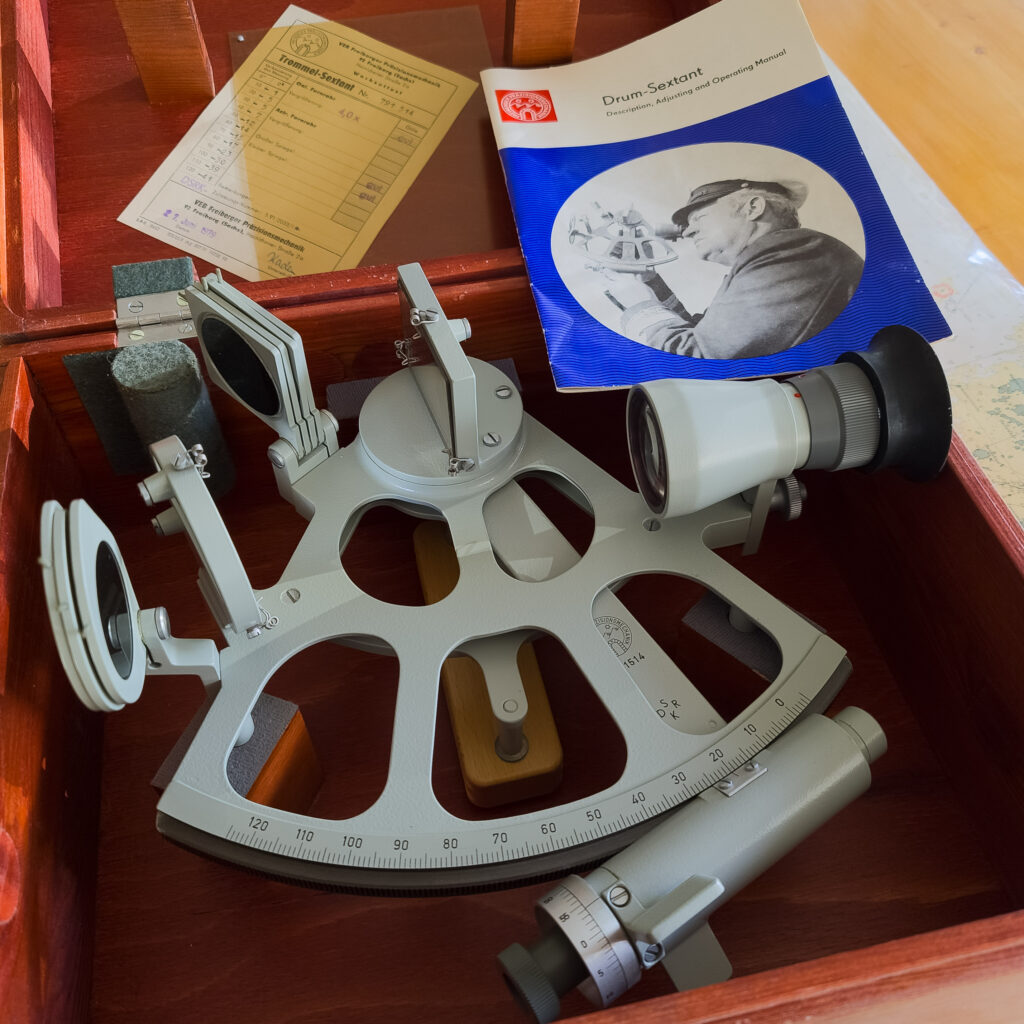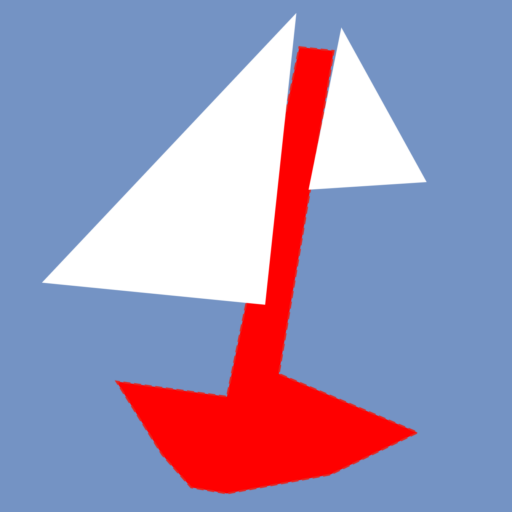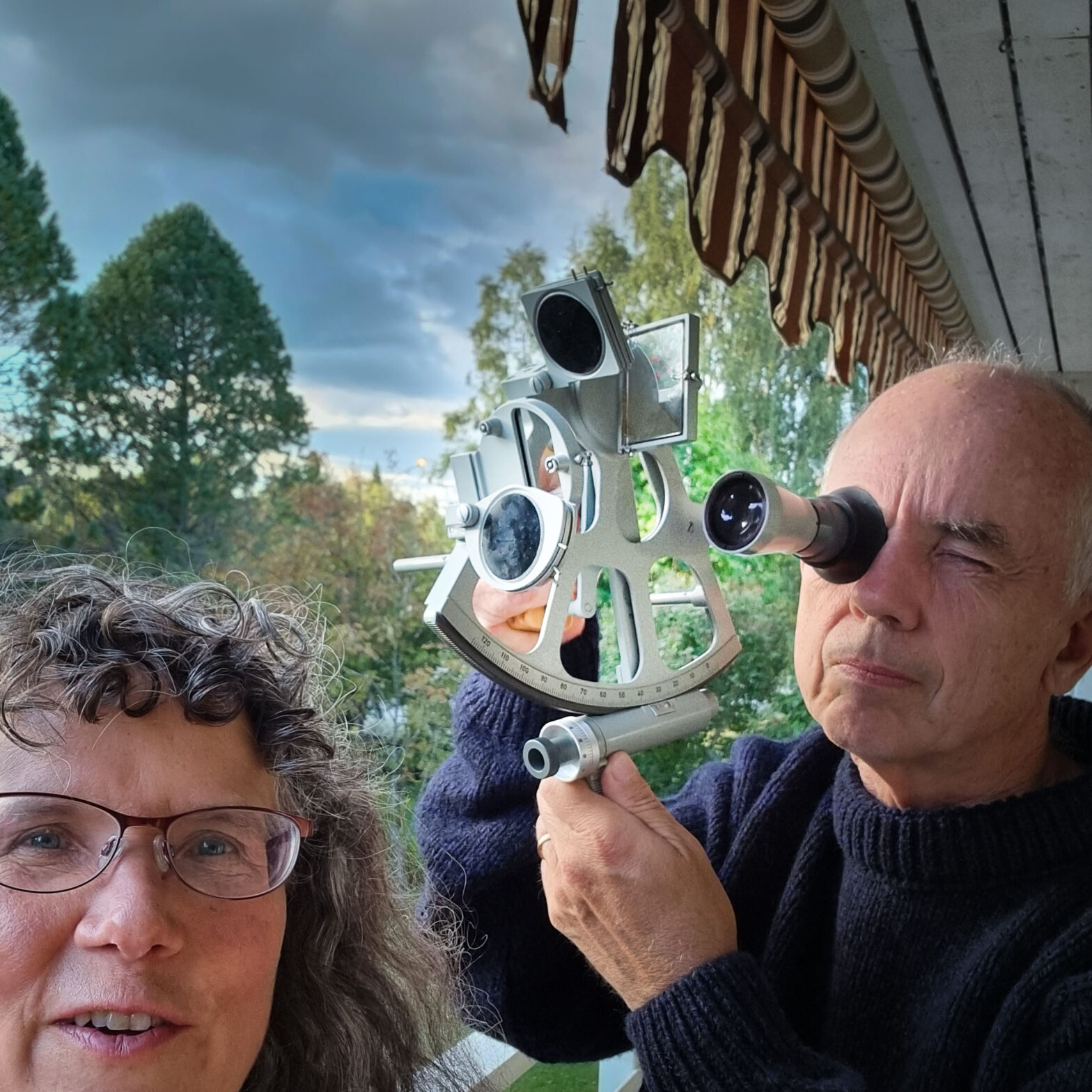Jakob:
The movements of the celestial bodies have interested me since I was a child; I spent many hours in my teens creating formulas for calculating e.g. the rising and setting of the sun.
This, in combination with boats and sailing, naturally also made me interested in astronomical navigation, even if it was on a theoretical level. One sextant was beyond my reach as a teenager in the 1970s.
But now the situation is different. I have called in a sextant at a good price at auction, an almost unused East German Freiberger from 1979. It arrived in the mail today and mastering it will be a fall project.
A sextant is thus an instrument for measuring how high the sun or another celestial body is in the sky. Using the height above the horizon and the time in a few seconds, the position can be calculated. Those who are skilled can get down to an accuracy of a few minutes, i.e. a couple of kilometers, which is more than enough for those who are out on the world's oceans.
I have the theoretical foundations clear to me, but it is important to be able to measure with precision. It is especially difficult on a ship in motion. I will report how it goes.


